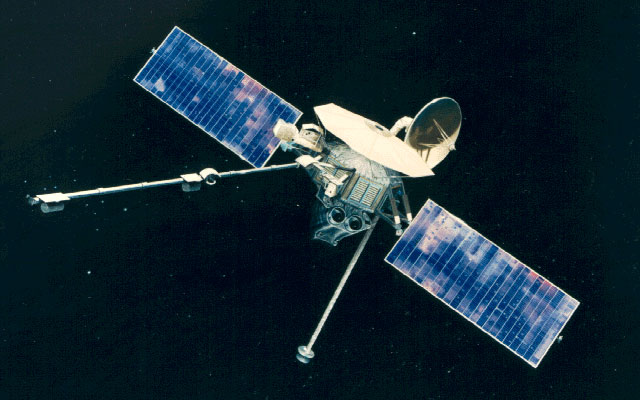
With Mariner 10, JPL engineers embarked on an experiment with an ingenious way of traveling through the solar system using the gravity of one planet to help propel the craft on to the next destination -- somewhat like a series of bank shots in a game of billiards.
With the scorched inner planet Mercury as its ultimate target, the final Mariner pioneered the use of a "gravity assist" swing by the planet Venus to bend its flight path. Using a near-ultraviolet filter, it produced the first clear pictures of the Venusian chevron clouds and performed other atmospheric studies before moving to the small, airless, cratered globe of Mercury. Here a fortuitous gravity assist enabled the spacecraft to return at six-month intervals for close mapping passes over the planet, covering half the globe (Mercury's slow rotation left the other half always in the dark when Mariner 10 returned).
Mass: 433 kilograms (952 pounds)
Science instruments: Twin narrow-angle cameras with digital tape recorder, ultraviolet spectrometer, infrared radiometer, solar plasma, charged particles, magnetic fields, radio occultation and celestial mechanics